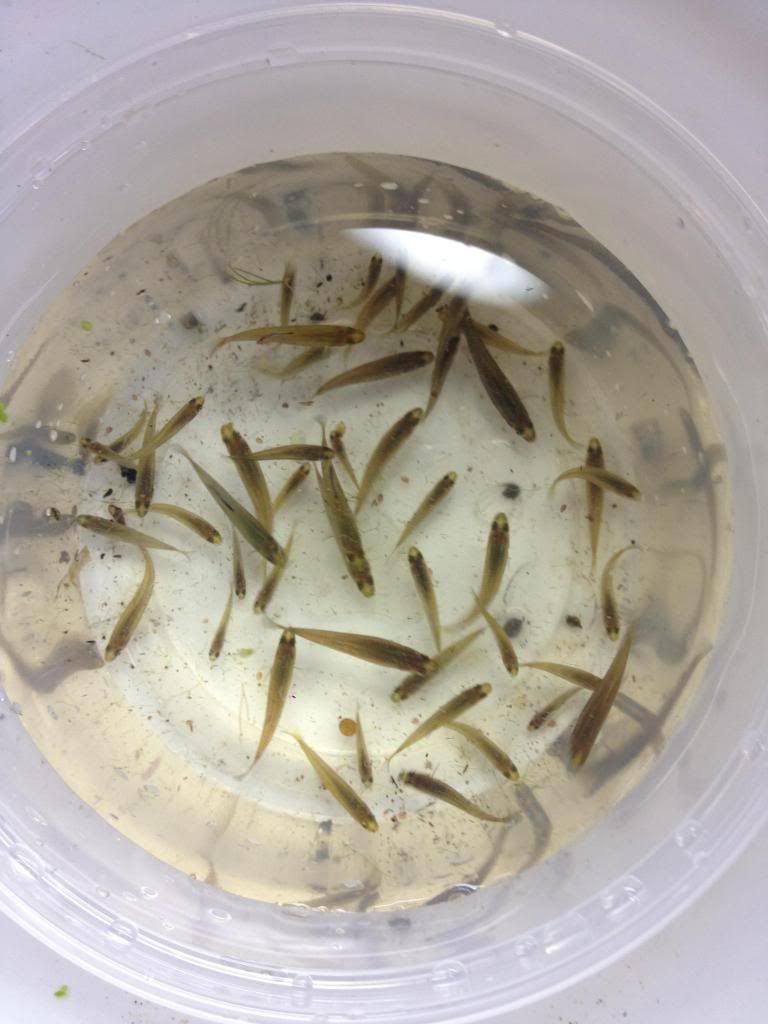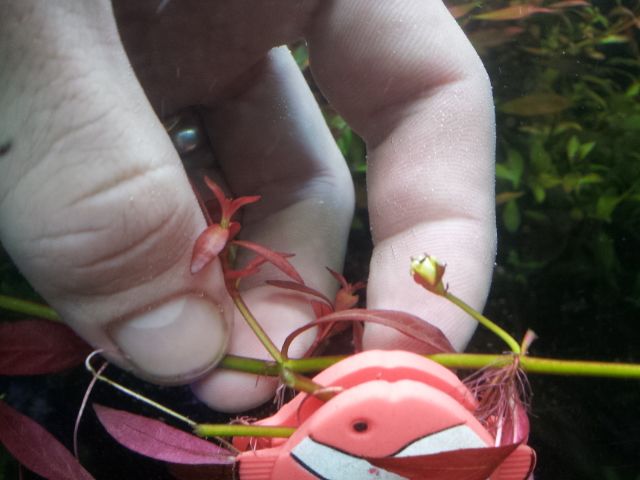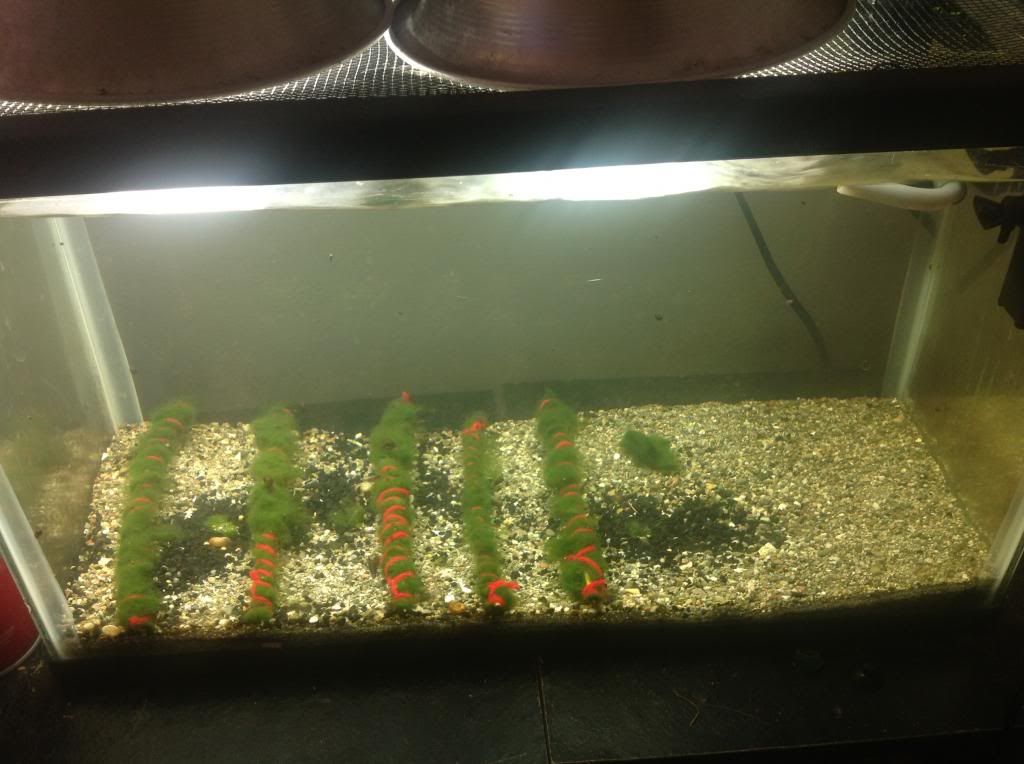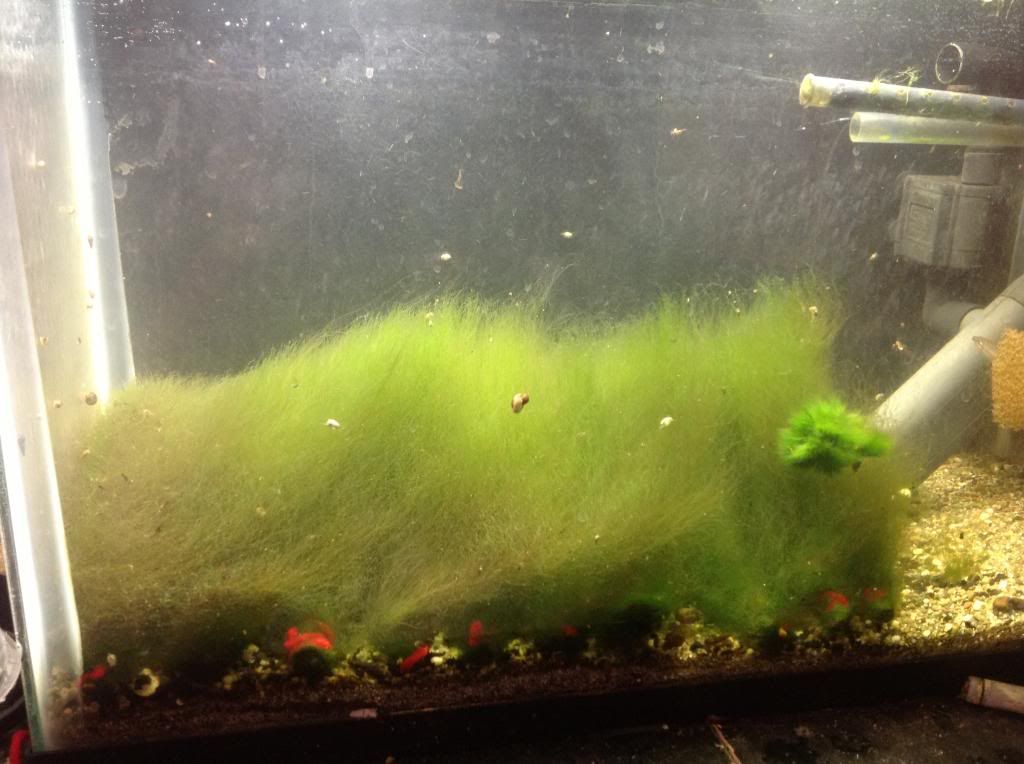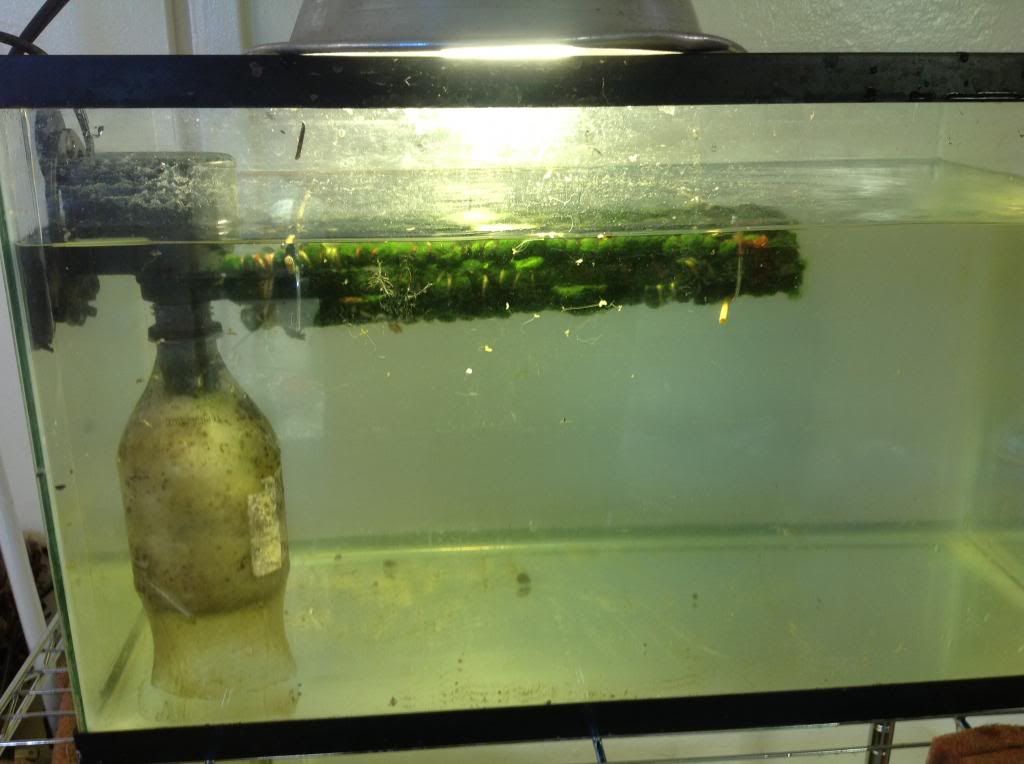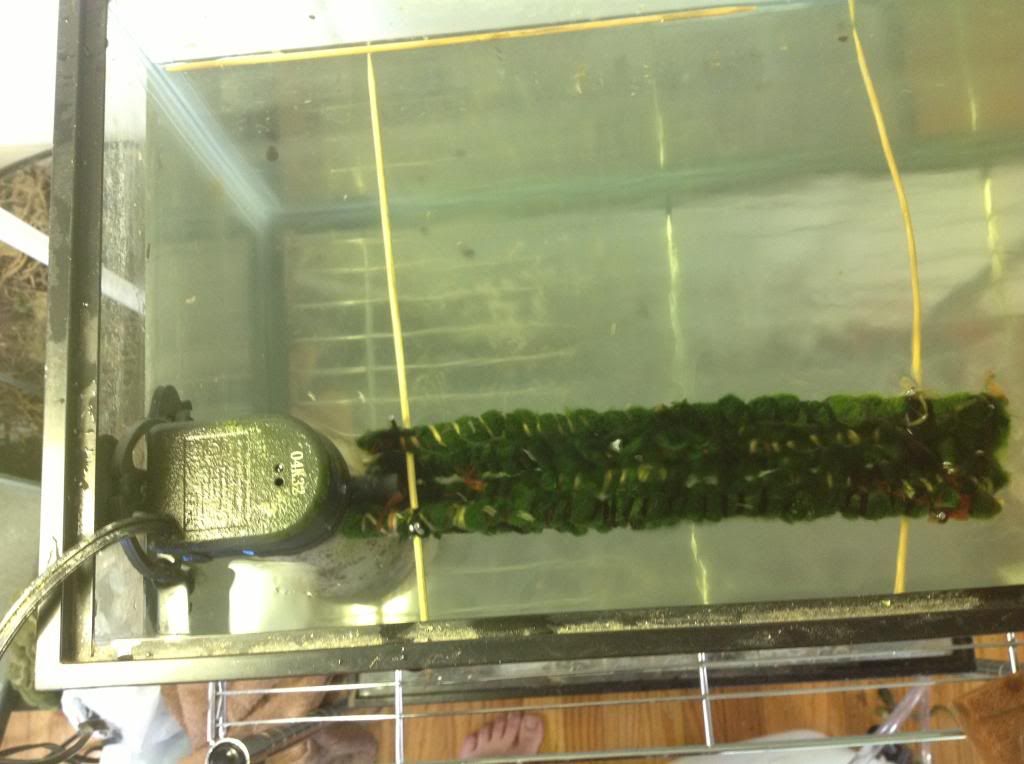one day, in such a mood, i walked into my in-laws place and saw their ten gallon tank over run by a tough hair algae. when i saw it, i saw possibilities. my thought process went something like this: that looks like an ugly, unkempt moss. i wonder what it could do if it were actually cultured. so i collected some and brought it home with me. i put it first in my elassoma gilberti tank, and just let it grow. it grew pretty quick, but in no way was it aesthetically pleasing. it looked like crap. later on, in another such mood, i saw what i needed to do.
i imagined a situation in which the algae grew nice and dense, similar to an attractive moss, and then i recreated the scenario in my head in order to have a model to grow my algae in. what i saw in my head was the algae that grows on rocks in faster flowing streams, which sometimes forms a bit of curly hair type algae on it, which grows in very dense thin mats. what made this algae any different from the algae in a lake? well, for one it had a very high amount of flow. two, it received full exposure to sunlight every day, since the particular stream i remembered seeing the attractive algae in had virtually no tannins in it and was quite shallow. three, it was constantly being grazed by critters that were able to scrape the algae off, or it was repeatedly exposed to dryness. this caused it to grow back thicker every time, since damaging a thread of algae often causes it to grow back in two or more threads.
so, these were the conditions that i needed to replicate to produce an attractive algae inside my tanks. the first thing i tried was attaching some of it to a little stone and putting it in front of a filter output. that didn't work so well, even with the high flow and regular trimming, it still produced very unattractive loose strands that would grow very long, but wouldnt form much in the way of a tight clump. fast forward a couple weeks. i end up in the mood again and decide to put an airstone on the E. gilberti tank. it felt like a gunshot went off in my head with how fast visualizations flashed along. in the time it took the first bubble to catch a few threads and start lifting it to the surface, my mind raced through a whole process:
grow the algae out along the surface, leave the lights on 24/7 to promote strands growing in one direction(up). add another type of algae, which can grow partially immersed, and encourage it to grow on the surface of the loose mat. after it is established, flip the mat over and let it grow until the secondary algae type grows back through the whole thickness of the algae mat and is protruding out the surface again. after this, increase flow to the bottom of the algae mat and turn the lights off. this will cause the algae near the top to die back just a little bit while keeping the bottom part alive. then, do the same thing on the other side. why? because the long thin strands of algae are faster growing and store less sugars than the slower growing, more dense type of algae. in other words, it would die faster than the type of algae i actually wanted to grow into a pad. after this, flip it back over and continue doing so until the majority algae is the thick stuff. by that point, i will have a thick pad of algae that i can cut into manageable strips.
so, that's what went through my head as i looked into the tank and watched the bubbles that day. the images that flashed though my head like southern lighting laid out the whole process. i knew how to make hair algae manageable, something that would allow me to make it look good. well, here are some pics of the result. showing some examples of what i have done with it so far. it is also amazing for fry, but more on that later.
showing how the algae looks when it is first grown into a floating mat:
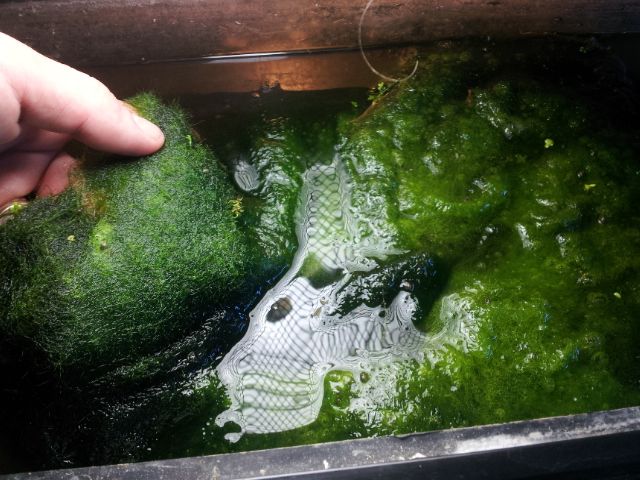
a thin piece, showing the layers it develops after it is flipped over a few times and cut into a thin strip:
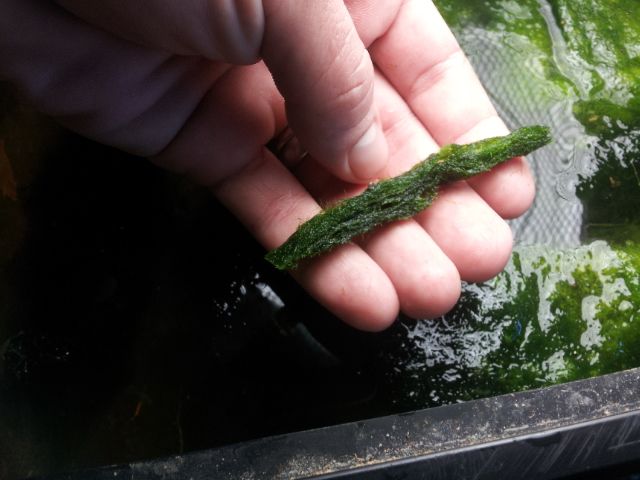
showing a piece that i cut and cleaned up a bit.
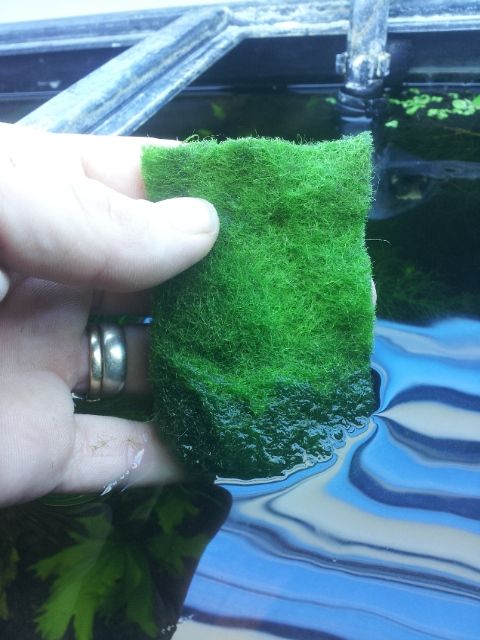
the next few images are showing a few things i did with the algae. i attached them to pieces of wood with black thread.
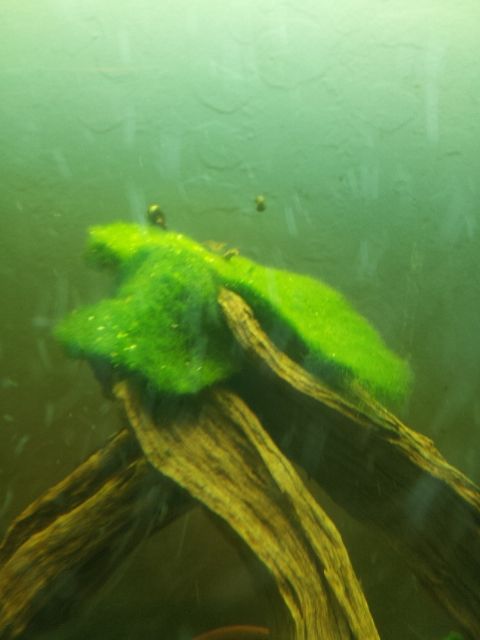
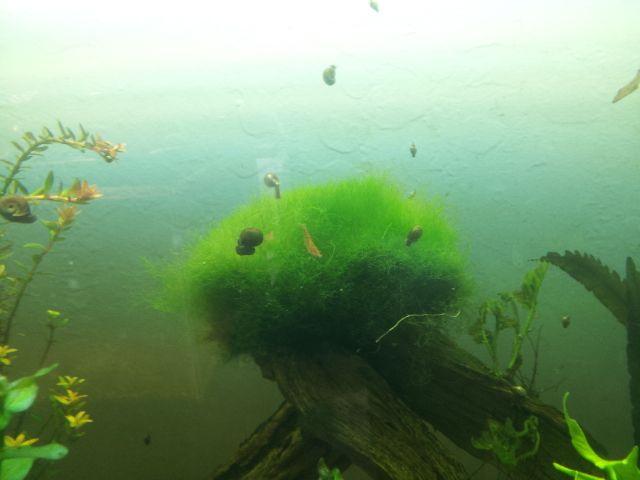
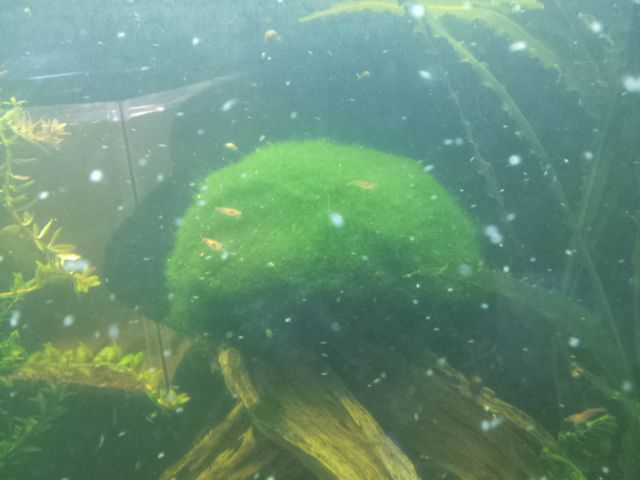
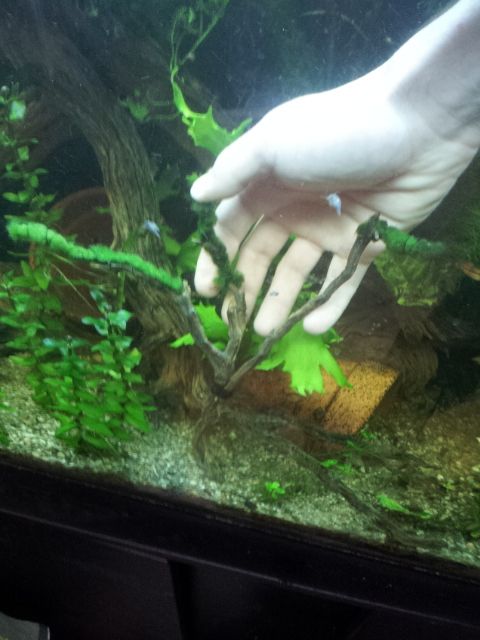

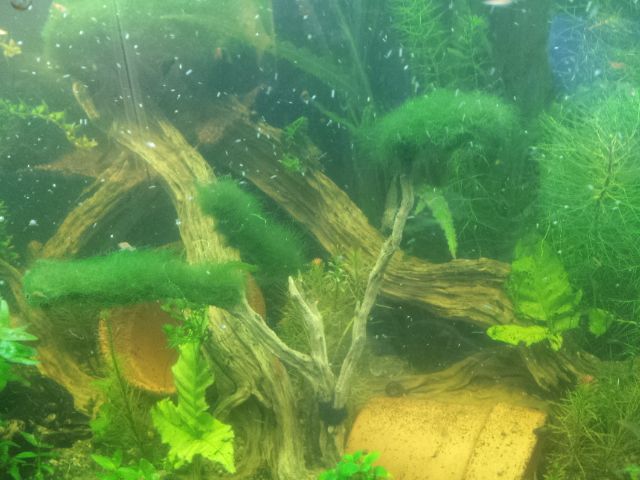
recent:

it acts a lot like a fast growing moss, especially if you provide it with a lot of flow. in fact, if you blast water on it and trim it often, it will grow much like a marimo ball.
its getting late, and my mind is starting to slow down a bit, so im gonna log for now. later on, probably when my mind is racing again, ill hop back on and explain how i use it to raise fry, why it works, and more of my observations thus far.


